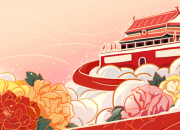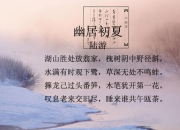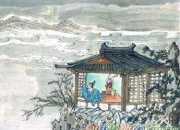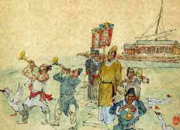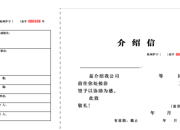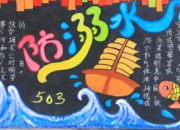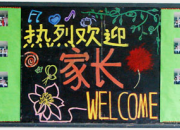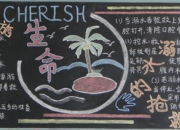颐和园英文导游词
时间:2021-08-31关于颐和园英文导游词大全
颐和园,中国清朝时期皇家园林,前身为清漪园,坐落在北京西郊,距城区十五公里,占地约二百九十公顷,与圆明园毗邻。它是以昆明湖、万寿山为基址,以杭州西湖为蓝本,汲取江南园林的.设计手法而建成的一座大型山水园林,也是保存最完整的一座皇家行宫御苑,被誉为皇家园林博物馆,也是国家重点旅游景点。
颐和园英文导游词
the tour will take 4-6 hours. the route is as follows:
out side the east gate-side the east gate in front of the hall of benevolence and longevity- in front of garden of virtuous harmony-in front of the grand theater building- a lakeside walk from the garden of virtuous harmony to the hall o jade ripples- in front of the o jade ripples- in front of the yiyunguan (chamber of mortal being)-hall of happiness and longevity- in front of the yaoyue (chamber of mortal beings)-hall of happiness and longevity-in front of the yaoyue(inviting the moon ) gate of the long corridor- strolling along the long corridor- visiting an exhibition of cultural relics- in front of the hall of dispelling clouds- inside the hall of dispelling clouds- atop the tower of buddhist incense- on a hilltop leading from the back door of the tower of buddhist incense- on a hilltop leading from the back door of the tower of buddhist incense- inside the garden of harmonious interest outside the south gate to suzhou shopping street- atop the stone bridge inside the suzhou shopping street on the road from the south gate of suzhou shopping street- on the road form the south gate of suzhou shopping street to the marble boat- in front of the ruins of the garden of complete spring along the lakeside by the marble boat-boating on the kunming lake-leaving out through the east gate.
(out side the east gate)
ladies and gentlemen: welcome to the summer palace.(after the self-introduction of the guide -interpreter) i hope this will be an interesting and enjoyable day for you .
during our tour, you will be introduced to time honored historical and cultural traditions, as well as picturesque views and landscapes.
the construction of the summer palace first started in 1750. at that time, the qing dynasty was in its heyday and china was a powerful asian country with vast territories. the monarch in power then was emperor qianlong. with supreme power and large sums of money, he summoned skillful and ingenious artisans from all over the country to carry out this construction work in honor of his mother `s birthday. after 15 years and one seventh of the nation` s annual revenue spent, the garden of clear ripples was completed and served as a testimony to china` s scientific and technological achievements. in 1860, this vast royal garden was burnt down along with the yuanming yuan (garden of perfection and brightness) by angol-french allied forces. in 1888, empress dowager cixi reconstructed the garden on the same site and renamed it the garden of nurtured harmony (summer palace). characterized by its vast scope and rich cultural embodiments, the summer palace has become one of the most famous tourist sites in the world. this is the main entrance to the summer palace-the east gate on top of the eaves of the door there is a plaque bearing a chinese inscription which means garden of nurtured harmony , whose calligrapher was emperor guangxu. the gate that you are now entering was used exclusively by the emperor, the empress and the queer mother. all others used the side doors.
(inside the east gate)
the summer palace can be divided into two parts: longevity hill and kunming lake .the whole garden covers an area of 290 hectares, of whih three- fourths consists of a lake and rivers .this imperial garden features 3,000 room-units and covers an expanse of 70,000 square meters with more than 100 picturesque spots of interest. the layout of the summer palace includes three groups of architectures: palaces where the emperor attended to state affairs, resting palaces of the emperor and empress, and sightseeing areas. entering the east gate we will come the the office quarters. entering the east gate we will come to the office quarters. the annex halls on both sides were used for officials on duty. this is the gate of benevolence and longevity. above the door there is a plaque bearing the same name in both chinese and manchurian characters. the gigantic rock in the foreground is known as taihu rock, or eroded limestone, quarried in jiangsu province and placed here to decorated the garden. on the marble terrace sits a bronze mythical beast, known as qilin or xuanni . it was said to the one of the nine sons of dragon king. a point of peculiar interest is that it has the head of a dragon, antlers of a deer, the tail of a lion and hooves of a ox, and is covered with a unique skin. it was considered an auspicious creature that brought peace and prosperity. this grand hall is the hall of benevolence and longevity. it was built in 1750 , and was known as the hall of industrious government. emperor qianlong ruled that the halls where monarchs attended to state affairs would be named after them . after the rebuilding of the summer palace, the hall was renamed, suggesting that benevolent rulers would enjoy long lives. the arrangement of the hall has been left untouched. in the middle of the hall stands a throne made of sandalwood and carved with beautiful designs. in the background there is a screen carved with nine frolicking dragons. on either side of the throne there are two big fans made of peacock feathers, two column-shaped incense burners, crane-shaped lanterns and an incense burner assuming the form of luduan, a mythological animal which was suppose to have the power to prevent fire. the small chambers on eight side were where the emperor qianlong and empress dowager cixi rested and met officials on formal occasions. on the verandah in the foreground of the hall there are bronze statues of dragon and phoenixes which served as incense burners on major occasions. they are hollow and smoke comes through holes on their backs. also on the veranda are tai ping (peace) bronze water vats made during the reign of emperor qianlong. as a precaution in case of fire, a fire was lit underneath the vats in the winter to keep the water in them from freezing.
(at the entrance of garden of virtuous harmony)
we are now visiting the garden of virtuous harmony, where emperor qianlong and empress dowager cixi were entertained with beijing opera performances. it mainly consists of the dressing house, the grand theater building and the hall of pleasure smiles. the grand theater building known as the cradle of beijing opera was uniquely laid out and magnificently decorated. on september 10, 1984, the garden of virtuous harmony opened its doors to visitors. there are also 7 exhibition halls with articles of daily use on display here. the staff here put up court dresses of qing dynasty in order to give the visitor a more vivid impression.

